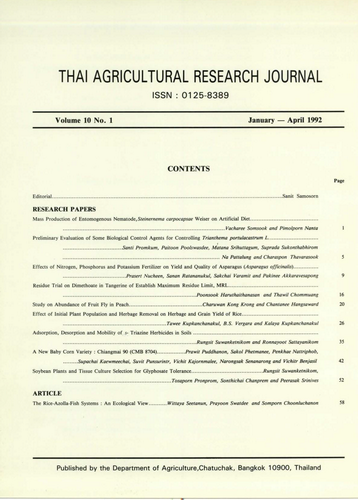Effect of Initial Plant Population and Herbage Removal on Herbage and Grain Yield of Rice
Keywords:
rice herbage, IR 28333 10 - 1 - 1, deepwater riceAbstract
Rice herbage as an animal feed is significant due to the high nutritional value, and readily available in most animal production areas; the rice grain yield is not sacrificed by herbage removeal. In a field experiment at IRRI, high initial plant population significantly increased hervage yield of long duration rice cultivar, IR28333-10-11, as a result of more tillers pet unit area and partly due to higher biomass tiller. High initial plant population resulted in faster growth rate, higher tiller number area, earlier development of high LAI, and larger tiller size resulting in high biomass and herbage yield at early vegetative. Nitrogen content and crude protein of rice herbage decreased with increasing plant population while total protien yield tended to increase. Rice grain yield, percent fertility, and 1,000-grain weight were not affected by initial plant population and herbage removal. High initial plant population significantly increased panicle number per unit area but decreased spikelt number per panicle. The use of higher plant population to improve herbage yield without decreasing grain yield is economically useful in rainfed areas prone to early submergence or drought.
Downloads
Published
How to Cite
Issue
Section
License

This work is licensed under a Creative Commons Attribution-NonCommercial-NoDerivatives 4.0 International License.
Thai Agricultural Research Journal



